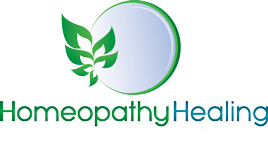Dr Samuel Hahnemann
The practice of present-day homeopathy stems from the work of Samuel Hahnemann, a successful German physician who first published his findings 200 years ago. However the natural principles underlying homeopathic thinking were identified as far back as to Hippocrates, known as the “father of medicine” (fifth century B.C.E). He stated that there were two methods of treating disease: by “similars” and by “opposites”. (Conventional medicine treats by opposites).
Disillusioned with the harmful medical treatments used in his day, Dr Samuel Hahnemann gave up his practice of medicine and concentrated instead on study, research and writing. In 1790 while translating William Cullen’s Materia Medica he undertook an experiment on himself with Peruvian Bark, or Cinchona, a source of quinine which was used to treat malaria. Cullen attributed its ability to cure malaria to its bitterness. Sceptical of this explanation, Hahnemann tested small doses on himself and developed symptoms similar to those of malaria such as intermittent fever, sweating and palpitations, though not malaria itself. When he stopped taking quinine his symptoms disappeared.
He observed from this experiment that “a medicine capable of producing symptoms in a healthy person will cure similar symptoms in a diseased person”. Today this is the central principle of Homeopathy known as the “Law of Similars” or “like cures like”.
During the next six years in continuation of his research Hahnemann experimented with other substances on healthy people and rigorously and systematically noted all the symptoms that occurred after taking the medicine. This was now how the action of the remedies was discovered. With further clinical experimentation he found that through a process of dilution and succussion of a substance, not only were harmful effects of certain medicines removed, but they also became more effective in stimulating the body’s innate healing ability.
By bringing his findings together Hahnemann synthesised a system of medicine which was to spread rapidly, becoming established in over thirty countries by the late nineteenth century, including most of Europe, America and beyond.
Today homeopathy is currently used in over eighty countries worldwide, with over thirty million people in Europe benefiting from homeopathic treatment. (1)
Reference:
1: The Society of Homeopaths, UK
Consultations available: Dublin, Ireland & Worldwide Via Video Call
Eileen Scullion of Homeopathy-Healing is a Registered Homeopath LicISH ISHom with the Irish Society of Homeopaths (The Regulatory Body for the Homeopathic Profession which is recognized by the Department of Health and Children and works on the National Working Group towards an integrated Health System).

